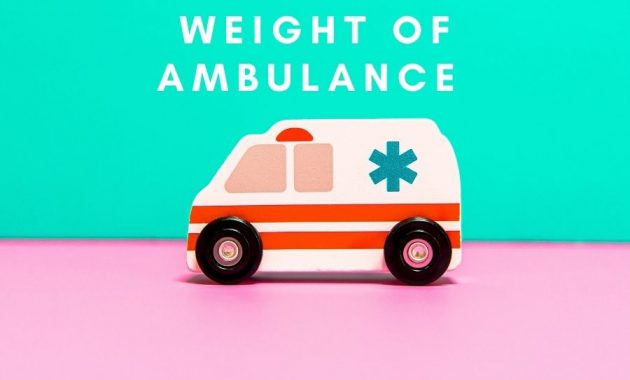The average weight of a school bus is about 25,000 pounds (12.5 tons). Of course, the weight of each bus is different depending on the type and model.
The school bus is a very iconic vehicle and has its own memorable value for some people. In addition, It serves cities and towns across the United States.
Like ambulances, school buses are elementary to identify with their yellow attributes, which are very useful for the community. The weight of the ambulance is also relatively the same as the type A school bus.

Types of School Bus
In general, there are 6 types of school buses, including:
Type A School Bus
A Type “A” school bus is a van conversion or bus built from a cutaway front section vehicle with a driver’s door on the left side. Type A-I vehicles have a Gross Vehicle Weight Rating (GVWR) of less than or equal to 14,500 pounds; Type A-I vehicles have a GVWR of greater than 14,500 pounds but less than or equal to 21,500 pounds.
Type B School Bus
A “type B school bus” is a conversion or body meant to accommodate more than ten people and built and placed on a van or front-section vehicle chassis, or stripped chassis, with a gross vehicle weight rating of more than 10,000 pounds. A portion of the engine can be found beneath or behind the windshield and next to the driver’s seat. The front wheels are in front of the entrance door.
Type C School Bus
A chassis with a hood and front fender assembly builds a Type “C” school bus. The front wheels are in front of the entry door. A cutaway truck chassis or a truck chassis with a cab, with or without a left side door, and a GVWR greater than 21,500 pounds, is also referred to as a “type C school bus.”
Type D School Bus
A “type D school bus” is a vehicle with a body mounted on a chassis and an engine positioned in the front, midship, or rear, with a gross vehicle weight rating of more than 10,000 pounds and the capacity to transport more than ten people. A type D school bus has a maximum length of 45 feet
Type III
Type III school busses and Type III Head Start busses are restricted only to passenger vehicles, railway stations, vans, and busses, with a maximum seat capacity of a manufacturer of 10,000 pounds or less and include the driver.
Outwardly outfitted and designated as a type A, B, C, or D school bus or type A, B, C, or D Head Start bus, a “type III school bus” and “type III Head Start bus” are not permitted.
A van or bus modified to a seating capacity of ten or fewer seats and placed in operation on or after August 1, 1999, must have been designed to meet passenger safety requirements at the time of construction.
Why is the school bus yellow in Color?
Regarding the history of the school bus, it was not yellow like it is today. The yellow school bus began in April 1939 in the United States (US).
Frank Cyr, a professor at Columbia University, research school transportation in ten US states. As a result, Frank Cyr concluded that this facility was in deplorable condition. At that time, many school students did not have transportation to go where they needed to study. Frank Cyr organized a conference with school officials and transport experts. The conference discussed details about colors, heights, widths, and school transport safety rules that had never been established before.
fact
Frank Cyr is known as the “Father of the Yellow School Bus.” And this color is used until today.
In addition, the color of the bus before the conference was very diverse. Initially, the bus colors were red, white, and blue to symbolize patriotism among students. But Frank Cyr offered education officials a new option with his visionary outlook. He declared to go with yellow and call it “National School Bus Glossy Yellow.” This is approved by the US National Highway Traffic Safety Administration. Then to indicate the respective school district, bold writing is done on the right side of the bus, and this writing is in black.
The color and writing factors are crucial for school transportation that travels in the morning and evening. The yellow color is very striking and easy to see in all weather conditions. Yellow has always been an important color for daily routines. Just look, traffic lights also slip yellow as a sign of being careful or getting ready. After the conference, 35 states immediately made changes. They provide yellow school bus transportation.
Source: http://www.ncuaqmd.org/


